What’s Up?
Sunday morning dawned mostly sunny with just a bit of fog and a west/northwest wind. I worked the backlit Vulture Trees, but the magic was lacking. Then I tried some slightly backlit vultures on the ground and might have one decent, ISO 5000 take-off image, probably my only keeper from the morning session. I drove down at sunrise and had a gorgeous, perfectly muted by fog sun ball to work with. I could’a been famous. I was working with the 400 f/2.8 and the 2X doing crane head portraits. When I sat, I was a bit too low, and when I kneeled, I was a bit too high. I shall return.
Today is Monday 12 December 2022. The forecast for this morning is for solidly cloudy dark with a NW wind — i.e., not terrible. I will head down to the lake for a bit this morning. This blog post took more than two hours to prepare including the time spent on the four image optimizations. Today makes two hundred sixty days in a row with a new, educational post just for you. Wherever you are and whatever you are doing, I hope that you too have a great day.
Please remember to use the B&H and Amazon links that are found on most blog pages and to use the BIRDSASART discount code at checkout when purchasing your new gear from Bedfords to get 3% back on your credit card and enjoy free second-day air FedEx. Please, also, consider joining a BAA IPT. You will be amazed at how much you will learn!
You can find some great photo accessories (and necessities, like surf booties!) on Amazon by clicking on the Stuff tab on the orange/yellow menu bar above. On a related note, it would be extremely helpful if blog-folks who, like me, spend too much money on Amazon, would get in the habit of clicking on the Amazon logo link on the right side of each blog post when they shop online. As you might expect, doing so will not cost you a single penny, but would be appreciated tremendously by yours truly. And doing so works seamlessly with your Amazon Prime account.
Please remember that if an item — a Delkin flash card, or a tripod head — for example, that is available from B&H and/or Bedfords, is also available in the BAA Online Store, it would be great, and greatly appreciated, if you would opt to purchase from us. We will match any price. Please remember also to use my B&H affiliate links or to earn 3% cash back at Bedfords by using the BIRDSASART discount code at checkout for your major gear purchases. Doing either often earns you free guides and/or discounts. And always earns my great appreciation.
Why the 2X TC?
The birds on the Vulture Trees are quite tame, even when you exit your vehicle. I could easily have driven closer and used the 1.4X TC instead of the 2X. On Friday past, I opted to work at 1200mm rather than getting closer and working at 840mm. Why?
Your Call?
Which of today’s four (not ordinary) featured images is your favorite? Please leave a comment and let us know why you made your choice. While each photo qualifies as a bit different and I like them all, I have a clear favorite.
|
|
|
This image was created on 9 December 2022 down by the lake near my home at Indian Lake Estates, FL. Working from the driver’s seat of my SUV, I used the BLUBB-supported Sony FE 600mm f/4 GM OSS lens, the Sony FE 2.0x Teleconverter, and The One, the Sony Alpha 1 Mirrorless Digital Camera). The exposure was determined via Zebra technology with ISO on the thumb dial. ISO 1250. 1/1000 sec. at f/8 (wide open) in Manual mode. When evaluated in RawDigger, the raw file exposure was determined to be dead-solid perfect. AWB at 7:49:13am on sunny morning. Tracking: Flexible Spot/AF-C with Bird Face/Eye detection enabled performed perfectly even at 1200mm. Be sure to click on the image to enjoy a high-res version. Image #1: Turkey Vulture neck-preening pose |
On Working the Same Subjects Ad Infinitum
When I am home, it is a rare morning when I do not drive down to the end of Banyan to check out the Vulture Trees. When photographing the same subjects — in this case Turkey and Black Vultures, over, and over, and over again, the key to success is to create something just a bit different. With Image #1, I love the sort of doofy position of the bird’s head. I kept four images from a series of more than 40 — this one was my favorite by far.
Urban Dictionary
doofy: descriptive of and pertaining to acts or behaviors that come across in a somewhat off-kilter or awkward way that can be seen as any combination of clumsy, uncoordinated, silly, strange, ditzy, dizzy, loopy, nerdy, geeky, odd or offbeat, sometimes infused with unintentional humor.
From where I sit, doofy qualifies as different.
|
|
|
This image was created on 9 December 2022 down by the lake near my home at Indian Lake Estates, FL. Working from the driver’s seat of my SUV, I used the BLUBB-supported Sony FE 600mm f/4 GM OSS lens, the Sony FE 2.0x Teleconverter, and The One, the Sony Alpha 1 Mirrorless Digital Camera). The exposure was determined via Zebra technology with ISO on the thumb dial. ISO 1250. 1/1000 sec. at f/8 (wide open) in Manual mode. When evaluated in RawDigger, the raw file exposure was determined to be dead-solid perfect. AWB at 7:55:51am on sunny morning. Tracking: Flexible Spot/AF-C with Bird Face/Eye detection enabled performed perfectly even at 1200mm. Be sure to click on the image to enjoy a high-res version. Image #2: Black Vulture — tall vertical, stitched panorama |
A Tall, Vertical, Stitched Pano
Wanting to include lots more of the hanging moss, I used one of the two buttons that I use for Focus Hold and panned down after focusing on the bird’s eye and created a few frames. I optimized both images with the same settings, cropped the moss image to include only the moss, expanded canvas on the base image, moved the moss onto that frame with the Move Tool (V), and used the arrow keys to line things up.
From where I sit, tall, very skinny verticals qualify as different.
|
|
|
This image was created on 9 December 2022 down by the lake near my home at Indian Lake Estates, FL. Working from the driver’s seat of my SUV, I used the BLUBB-supported Sony FE 600mm f/4 GM OSS lens, the Sony FE 2.0x Teleconverter, and The One, the Sony Alpha 1 Mirrorless Digital Camera). The exposure was determined via Zebra technology with ISO on the thumb dial. ISO 1250. 1/640 sec. at f/11 (stopped down one stop) in Manual mode. When evaluated in RawDigger, the raw file exposure was determined to be dead-solid perfect. AWB at 8:02:28am on sunny morning. Tracking: Flexible Spot/AF-C with Bird Face/Eye detection enabled performed perfectly even at 1200mm. Be sure to click on the image to enjoy a high-res version. Image #3: Black Vulture on perch with wing of flapping neighbor |
You Know the Rule
When unexpected action occurs, push and hold the shutter button. That’s exactly what I did when this bird’s neighbor began flapping in place. I kept two frames, grabbed the wing from one frame, and brought it onto the image with the best head angle. Call it a photo illustration if you wish.
In any case, from where I sit, this one qualifies as different.
|
|
|
This image was created on 9 December 2022 down by the lake near my home at Indian Lake Estates, FL. Working from the driver’s seat of my SUV, I used the BLUBB-supported Sony FE 600mm f/4 GM OSS lens, the Sony FE 2.0x Teleconverter, and The One, the Sony Alpha 1 Mirrorless Digital Camera). The exposure was determined via Zebra technology with ISO on the thumb dial. ISO 1250. 1/640 sec. at f/11 (stopped down one stop) in Manual mode. When evaluated in RawDigger, the raw file exposure was determined to be dead-solid perfect. AWB at 8:04:09am on sunny morning. Tracking: Flexible Spot/AF-C with Bird Face/Eye detection enabled performed perfectly even at 1200mm. Be sure to click on the image to enjoy a high-res version. Image #4: Turkey Vulture — resting on branch stub |
Resting Vultures
Vultures will occasionally rest on horizontal branches. Tracking: Flexible Spot enabled me to re-compose and place the bird in the upper right corner. I stopped down to f/11 in an effort to sharpen up the moss on the trunk of the dead tree.
From where I sit, this one qualifies as different.
|
|
All images on this card were created by Arthur Morris on the Hooptie Deux at Alafia Banks |
2023 Spoonbill Boat 1-1/2 DAY MINI-IPT: $1199.00.00. Limit: 5 photographers/Openings: 3.
A full day on WED 15 FEB and the morning of Thursday 16 FEB 2023: 1 1/2 days.
Two morning and one afternoon photo session (weather permitting) via customized pontoon boat.
For early-arriving folks, artie is throwing in a free afternoon In-the-Field session at a little-known but very active rookery in North Tampa on Tuesday 14 February.
We will be leaving the dock in Gibsonton, FL very early for the morning sessions in hopes of photographing a pre-dawn White Ibis blast-off and creating some dramatic silhouettes or pleasing blurs. The morning sessions are planned for the Alafia Banks Roseate Spoonbill Rookery. We have several options for the afternoons including returning to Alafia. We may spend one afternoon on foot at the North Tampa rookery mentioned above. There will be lots of opportunities for flight photography of several species including and especially Roseate Spoonbill. Also likely for flight photography are nesting Brown Pelican, Great Blue Heron, and Double Crested Cormorant, many carrying nesting material. This IPT includes all boat and guide fees, in-the-field instruction from two great leaders, chest waders (feel free to bring your own of course to assure a perfect fit), and three working lunches (Monday thru Wednesday). For the most part we will be standing in mid-calf to knee-deep water behind our tripods. We help you get in and out of the boat safely with your gear. This is likely not the best trip for folks with mobility or balance problems. Note however that some folks opt to stay on the boat to photograph. They usually have lots of chances for flight photography of spoonbills and other species but are almost always pretty far away from the spoonbills that land.
Mid-February is prime time for photographing spoonbills at the absolute peak of breeding plumage. For unknown reasons, the spoonbills at Alafia are much more colorful than the birds that breed at Stick Marsh later in the season. The Hooptie IPT represents an incredible opportunity and I do hope that you can join us. All of the images on the cards were made on the Hooptie Duex during the last two weeks of February, prime time for the spoonies in mega-breeding plumage.
You may hold your spot with an e-mail request. Then, you may either secure your spot by calling Jim or Jennifer at the office at 863-692-0906 and leaving the $599 deposit on credit card or sending your check for payment in full to us as follows with the check made out to:
BIRDS AS ART
Please send it via US mail here:
BIRDS AS ART
PO BOX 7245
Indian Lake Estates, FL 33855
If you call to leave your deposit, you will be asked to mail your check for the balance ASAP. Be sure to give us your e-mail address.
|
Images courtesy of our guide; copyright 2017 Captain James Shadle (aka Froggie). All of the images here were created at Alafia Banks. Card creation and design by Arthur Morris/BIRDS AS ART. |
Everybody Wants Spoonbills!
Roseate Spoonbill is one of if not the most sought after avian photographic subjects in Florida. They are generally hard to find and somewhat difficult to approach. They are relatively easy to find at Alafia Banks—heck, you can’t miss seeing them, but even there they can on some days be somewhat difficult to approach. On some days we may be able to get ridiculously close to them. The huge incentive to get out to Alafia Banks in mid-February is the chance to photograph this species at the height of its spectacular breeding plumage…. with long telephoto lenses. A 500 or 600 with a 1.4X TC is perfect for flight.
As above, there will — weather permitting — three boat trips — 2 mornings and 1 afternoon — on this MINI IPT. All to Alafia Banks for spoonbills and Brown Pelicans (with lots of flight photography often with the birds likely carrying nesting material), Double-crested Cormorants, ibises (both Glossy and White) in breeding plumage. Many of the White Ibises will be sporting their spectacular, distended, red, naked (un-feathered) throat pouches—typically larger in the females. In addition, we may get to photograph egrets including Great and Reddish, both in full breeding plumage, shorebirds, and more. There will be lots of flight photography opportunities. Afternoon trips either to Alafia Banks for spoonbills and more or to a more sheltered inland rookery location for a variety of nesting birds. In the event of horrific weather artie will either take the group to Fort DeSoto or will conduct an image review/Photoshop session. This IPT includes lunches on the full day with small group image sharing and review and some over-the-shoulder Photoshop instruction.
The 2023 Expanded Winter/Spoonbill Boat/DeSoto 4-DAY IPT: $2199.00.00. Limit: 5 photographers.
The 2023 Expanded Winter/Spoonbill Boat/DeSoto 4-DAY IPT
Bird photographers, especially those wishing to escape the snow, ice, and freezing winter temperatures to the north of sunny Florida, can add two mornings at Fort DeSoto an afternoon at the little-known but fabulous rookery north of Tampa, a second (free) afternoon at that same rookery, to the 1 1/2 days on the Spoonbill Boat. Shared lodging is a possibility that includes watching the Super Bowl at my home on Sunday 12 February and driving over early to DeSoto. DeSoto is one of the very few bird photography hotspots that has the possibility of being great on any day of the year. It is generally superb in winter with lots of wading birds, terns, both species of pelicans, many species of shorebirds including Marbled Godwit, and lots of flight photography.
You can hold your spot with an e-mail request. Then, you may either secure your spot by calling Jim or Jennifer at the office at 863-692-0906 and leaving the $599 deposit on your credit card or sending your check for payment in full to us as follows with the check made out to:
BIRDS AS ART
Please send it via US mail here:
BIRDS AS ART
PO BOX 7245
Indian Lake Estates, FL 33855
If you call to leave your deposit, you will be asked to mail your check for the balance ASAP. Be sure to give us your e-mail address.
Typos
With all blog posts, feel free to e-mail or to leave a comment regarding any typos or errors.

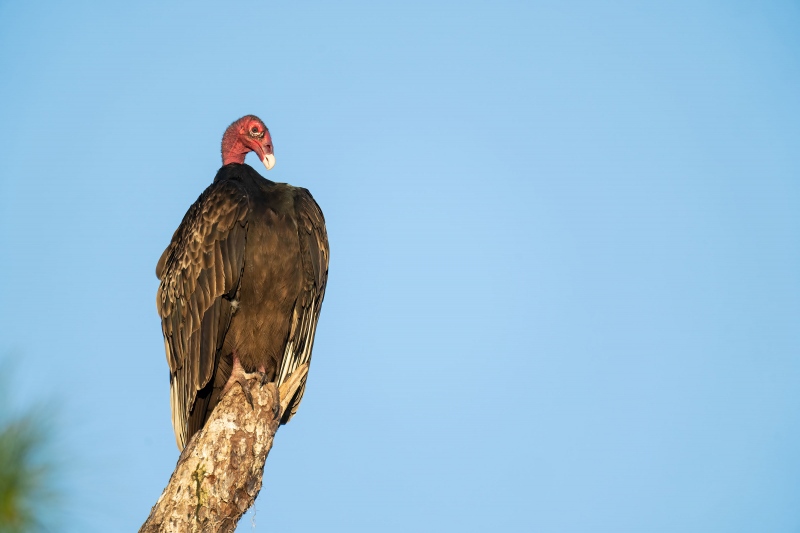
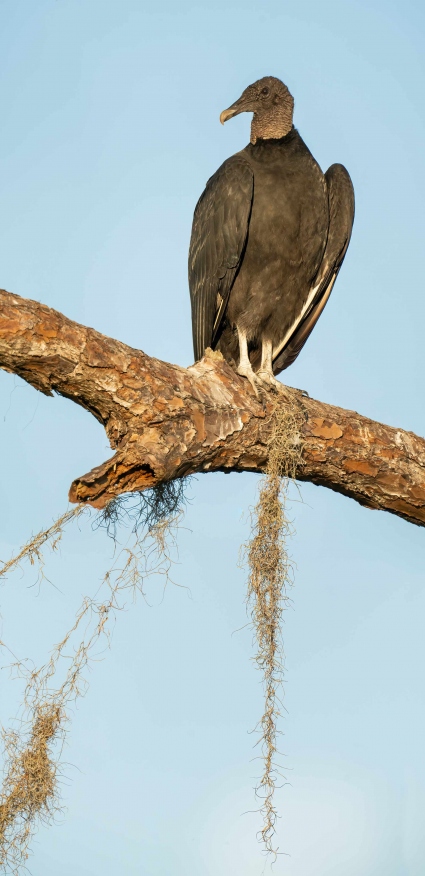
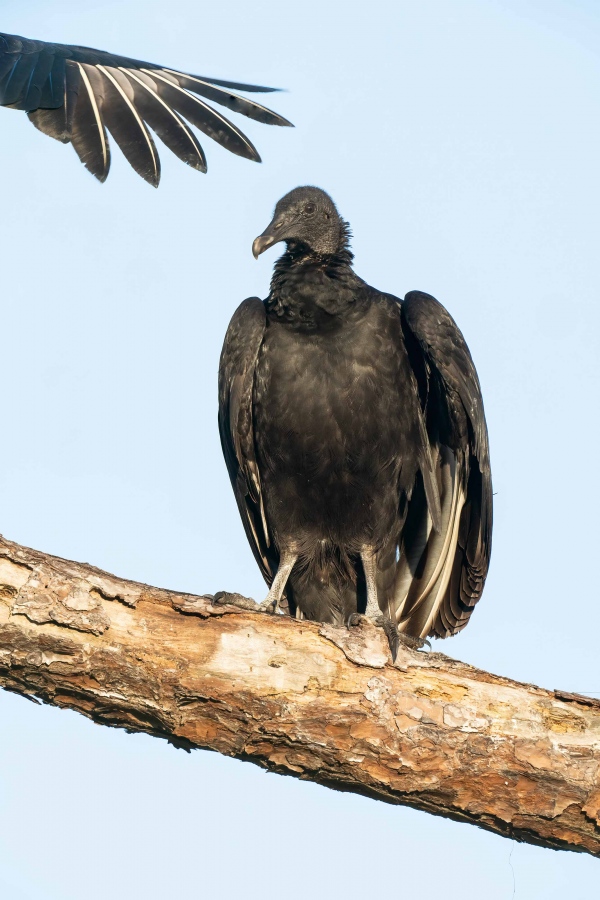
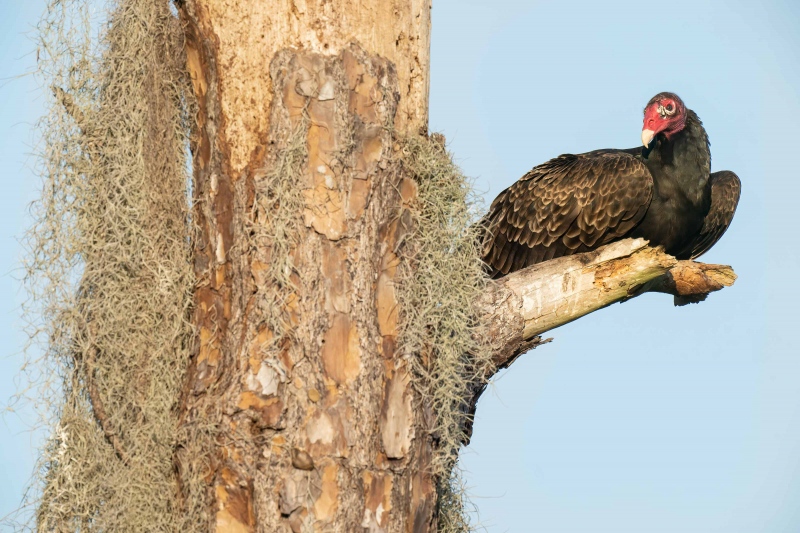
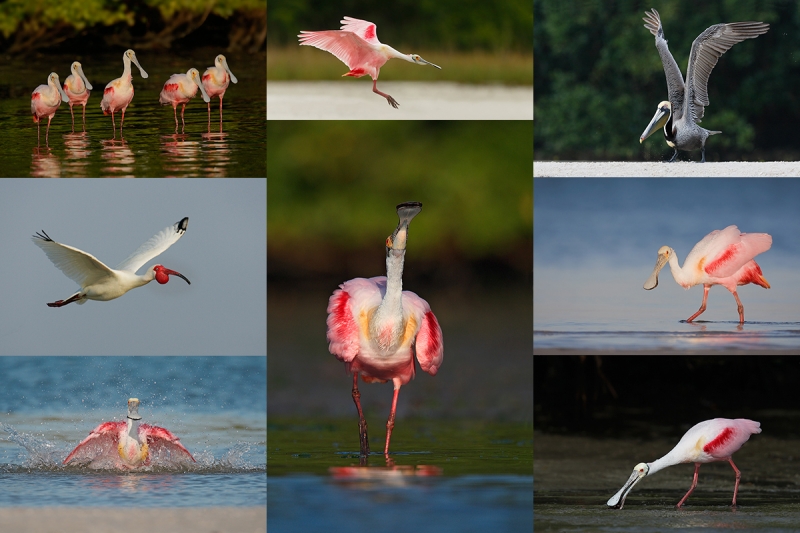
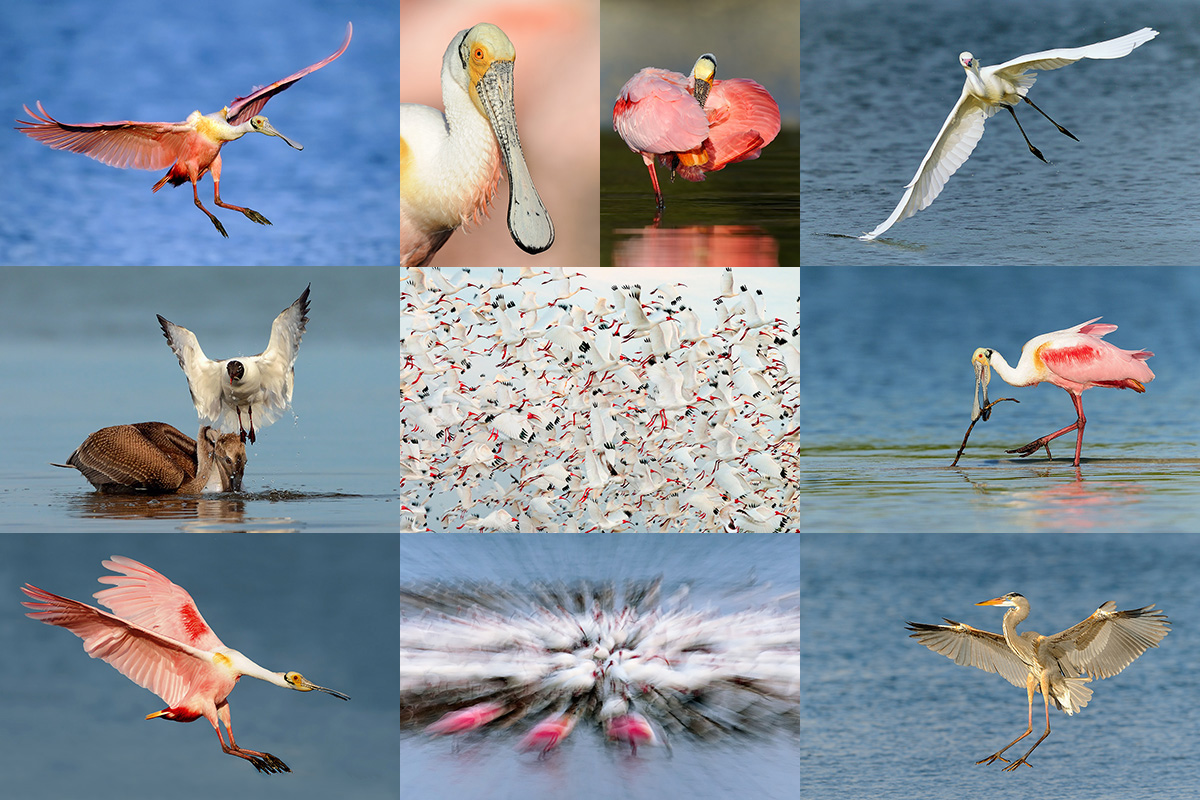













I would have liked the head turned just a smidge more so the beak doesn’t intersect the shoulder on image four. I should mention I love the vultures head looking down in image one. I forgot to enlarge image four . It doesn’t bother me as much once enlarged. As for dof on image four the moss one would think f/11 would have been enough to have the moss sharp. I know just small increments in dof as the vulture is sitting back more than initially appears.
I think that all 4 pictures of Turkey Vulture and Black Vulture are well made and interesting! I like each of the 4 pictures Artie!!
Hi Artie. This is off topic but how do you see the comparison between the Sony AR7 V and the Alpha 1? I want to switch to Sony but having a tough time with Alpha 1 price.
Hi Mark,
A7R IV is great for static birds and wildlife, scenics and macro. For birds in flight and birds and wildlife in action the a1 is light years ahead. AF-C with Bird Face/Eye Detection enabled is truly science-fiction-like. I will demonstrate same in San Diego. The A7R IV offers Zebra technology. When that is set up properly, it is a huge advantage.
with love and see you soon,
artie
Hi, Artie. Image 1 for me. The bird seems to be growing out of the tree. And I like its doofy expression. Then image 4.
I like #4. Never seen a vulture sit like a duck
I see one or two like that most days.
with love, a
Artie
I do love the sassy look back in image #1 as she poses for the camera. Image #2 and #3 are not as appealing to me. Image #4 is really cool and normally do not see a TV resting like that and so awesome capture and right place right time. Image #4 is my favorite with #1 a tie.
You didn’t want waste gas in driving closer by going with the 1:4…lol 🙂 or you needed to grab the moment before the TV’s changed there stance and there was no time? Kevin’s writing makes sense on the Angle though.
Always with love b
Thanks, Bob. In #1 it’s more of a look down than a look back. Kevin is correct, staying back with the 2X gives you a shallower angle of inclination; as you are not pointing the lens up so much it seems that you are more on the same level as the bird.
with love, artie
Agree totally with Kevin, apart from the fact that the moss on Image 2 is obviously natural & doesn’t look fake at all to me. I would probably go for Image 4 as overall favourite. I like the head angle and the bird doesn’t look quite so ugly in this pose! I like the face ‘attitude’ in Image 1, but the head does not seem to be as sharp as in Image 4.
Thanks for commenting. I agree on the moss in #2. The moss in #4 bugs me a bit as it could have used a lot more depth of field. All of the vulture’s heads are razor sharp. Perhaps you did not enlarge it.
with love, a
Good morning Artie. For me a toss up between the first image and the one with the vulture laying down. The first image would be enhanced if maybe moved to the right to add a little more green from the pine tree. Also I like the blue sky. Moss doesn’t look natural on the second photo. I love large in the frame on the black vulture along with the close up details. Not a fan of the wing and a bird just on a stick doesn’t work for me. Love the one laying down but not the head angle. As for the converter I would stay with the 2X as the 1.4 would make the angle of attack very steep.
Thanks for leaving a comment, Kevin.
With #1, I actually have that exact image but I like the one with less of the pine bough. I’ve really learned to get the BLUE’s right using the Color Mixer tab. I love the head angle on #4. What would you have liked?
As always, different strokes.
with love, artie